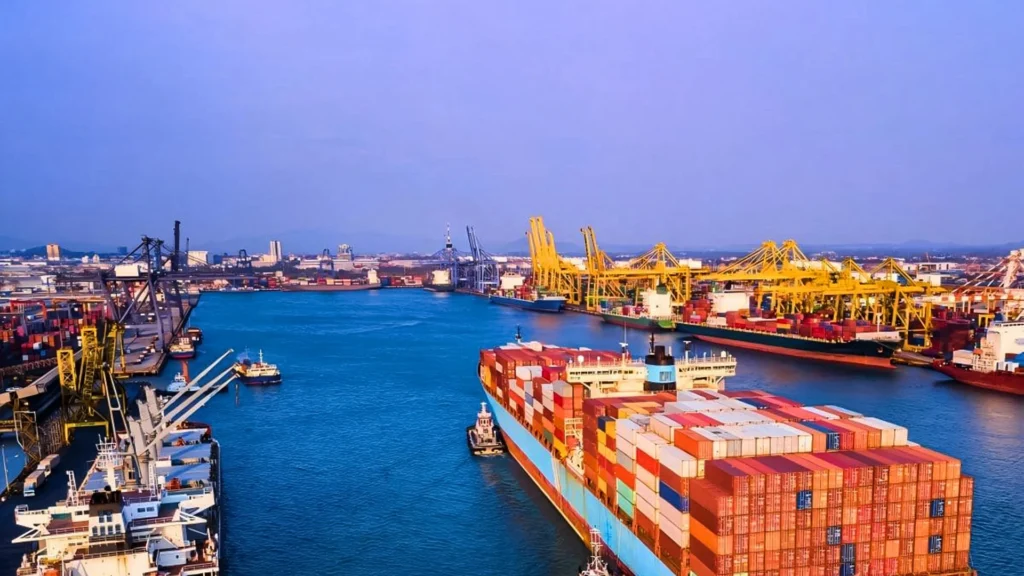5 Most Common Marine Salvage Airbags
07/29/2025What is the purpose of tugboats?
07/30/2025The world’s top ten busiest ports
Introduction
The world’s busiest container ports handle massive amounts of cargo every year. Behind the scenes, fender systems play a key role. These fenders act as buffers between ships and docks, preventing damage and making sure everything runs safely and smoothly.
At major ports like Shanghai, Singapore, and Ningbo-Zhoushan, ships dock constantly—many of them huge container vessels. The force from docking can be strong, and the sea conditions often change. That’s why each port carefully chooses fenders that match the size of the ships, the shape of the berths, and the local conditions. The most common types include cone fenders, cell fenders, arch fenders, and pneumatic (Yokohama) fenders.
In this article, we’ll explore how the world’s top 10 busiest ports use different types of fender systems to support safe and efficient operations.

What Are Fender Systems?
Fender systems are protective devices installed along docks and wharves. They absorb impact when ships come in to dock, protecting both the ship’s hull and the port structure.
Here are the main types of fenders used today:
- Cone fenders and cell fenders: Handle large energy loads, ideal for big ships.
- Cylindrical fenders: Simple design, good for general use.
- Arch fenders: Low reaction force, often used at container terminals.
- Pneumatic (Yokohama) fenders: Air-filled, float on water, flexible for ship-to-ship or offshore use.
Many ports now use modern materials like rubber or UHMW-PE plastic, and some even embed sensors into their fenders to monitor pressure and movement in real time.
Top 10 Busiest Container Ports (2023/2024)
| Rank | Port | Country | 2024 TEU (Millions) | 2025 Status |
|---|---|---|---|---|
| 1 | Shanghai | China | 51.506 | First port to pass 50 M TEU mark |
| 2 | Singapore | Singapore | 41.124 | Still strong after slight growth |
| 3 | Ningbo‑Zhoushan | China | 39.301 | Surging fast; nearly catching Singapore |
| 4 | Shenzhen | China | 33.399 | Growing well; >33 M TEU |
| 5 | Guangzhou | China | ~25.41 | Recovered steadily; ~3.9% growth |
| 6 | Qingdao | China | ~30.87 (≈28.77) | Around 30+ M TEU in 2024 |
| 7 | Busan | South Korea | 23.04 | Maintained its position |
| 8 | Tianjin | China | ~15–16 | Within top 10 range |
| 9 | Hong Kong | China | 13.69 | Out of top 10; traffic declined |
| 10 | Los Angeles/Long Beach | USA | 5.36 (LA alone) | Largest in U.S.; near 20 M for combined system |
Fender Systems at Each Port
1. Shanghai Port
Shanghai is the busiest port in the world. It uses cone fenders and cell fenders—ideal for handling large ships and strong docking forces. At Yangshan Deep Water Port, high-performance rubber fenders protect the docks from impact and wear.
2. Singapore Port
Singapore is a major hub with many vessel types. It uses a mix of cylindrical, cell, and arch fenders. For floating berths and ship-to-ship transfers, pneumatic fenders are common.
3. Ningbo-Zhoushan Port
As ship sizes grow, Ningbo-Zhoushan equips its docks with cone and cell fenders to absorb heavy impact. These fenders help the port handle massive container vessels safely.
4. Shenzhen Port
Shenzhen has over 140 berths and handles high ship traffic. The port mainly uses arch fenders, cylindrical fenders, and cell fenders to support frequent docking operations.
5. Guangzhou Port
Located in the Pearl River Delta, Guangzhou uses a variety of fenders, including cylindrical, cell, and arch types. The port chooses fenders based on the size and type of ships docking at each berth.
6–10: Busan, Tianjin, Hong Kong, Qingdao, and U.S. Ports
These ports also use high-quality cone, cell, arch, and pneumatic fenders.
- Busan and Qingdao serve many large ships and use heavy-duty fender systems.
- Tianjin and Hong Kong mix fixed fenders with floating ones to match their deep berths and varied ship sizes.
- Los Angeles/Long Beach invests in modern rubber fenders for safe docking in high-traffic zones.
Regional Fender Trends
- Chinese ports rely on cone and cell fenders to handle super-sized ships.
- Singapore and Hong Kong use flexible combinations of arch and pneumatic fenders for different berth conditions.
- European ports, like Rotterdam, lead the way in smart fenders—plastic fenders with sensors that collect real-time impact data.
- American ports are also upgrading to stronger and more durable rubber and plastic fenders to meet growing demands.
Looking Ahead
The future of port fender systems lies in smarter, safer, and greener solutions. Here’s what’s coming next:
- Custom designs: Ports are choosing fenders based on berth shape, tides, ship size, and docking angles.
- Sensor technology: Modern fenders can collect impact data, helping operators monitor docking in real time.
- Eco-friendly materials: Plastic fenders last longer, resist wear, and are easier to maintain.
- More flexibility: As global trade routes shift, ports need fender systems that can adapt quickly.
Conclusion
As global shipping continues to grow, ports must prepare for more and bigger ships. Fender systems play a key role in keeping docking safe and efficient. From cone and cell fenders in Shanghai to pneumatic fenders in Singapore, each port selects what works best for its needs.
Good fender systems prevent damage, protect infrastructure, and support smooth operations. And as ships evolve, fenders must evolve too—smarter, stronger, and more sustainable.
Let’s not forget: behind every busy port, there’s a hardworking fender system doing its job quietly and reliably.
